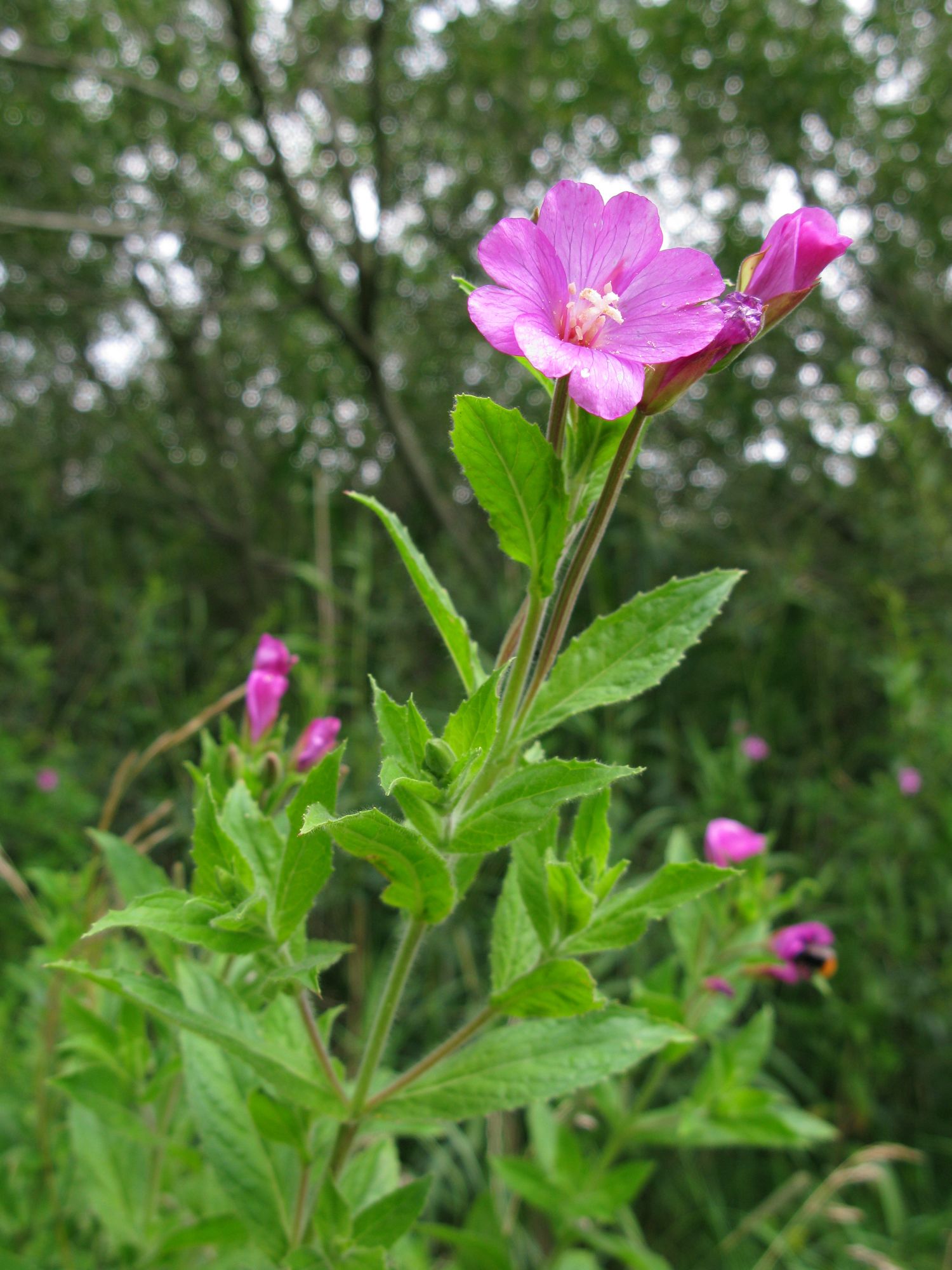Great willowherb (Epilobium hirsutum)
Where?
Epilobium hirsutum grows scattered in shrubberies along streams, ditches, springs and in the fringe of willow scrub. It loves loamy, somewhat calcareous soils.
Appearance?
Is a perennial herbaceous plant with growth heights of 50 to 180 cm. The erect, richly branched stem is densely hairy with protruding hairs. The lower leaves are almost cross-opposite, the rest alternate. The leaf blades are narrow-lanceolate with a length of 6 to 12 cm and a width of 1 to 4 centimeters. The leaf margins have strong denticles. The flowering period is between July and September. Its purple petals are radially symmetrical and have a length and diameter up to 2 cm.
Special Features?
Occasionally,the Great willowherb is cultivated as an ornamental plant, so in Australia and America it is considered a widespread neophyte.
"4837-epilobium-hirsutum-20110718" by Malte is licensed under CC BY-SA 3.0

"23875415" by birding16 is licensed under CC BY-NC 4.0

Great willowherb in the withered state
Rasbak, CC BY-SA 3.0 <http://creativecommons.org/licenses/by-sa/3.0/>, via Wikimedia Commons
This website uses no external trackers, no analytics, just session cookies and values your online privacy.

